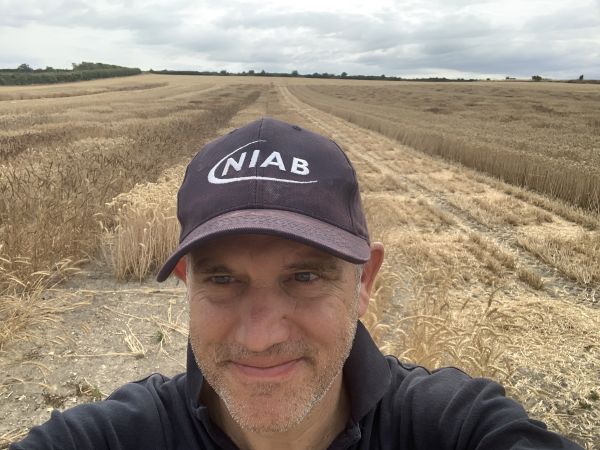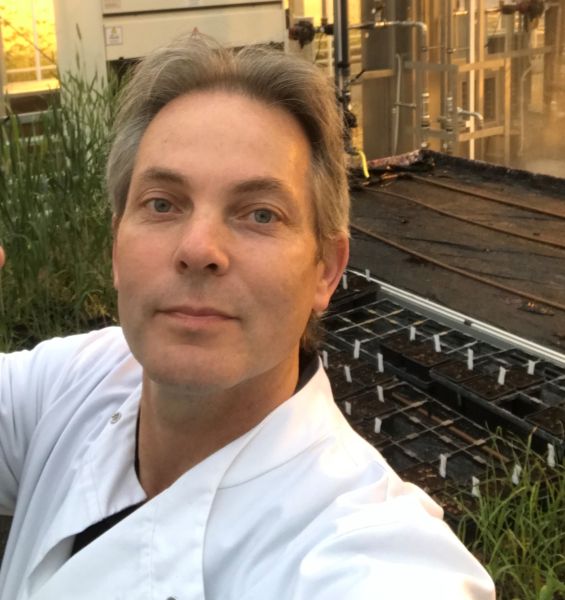Crop breeding technologies
Many crops have undergone a domestication bottleneck, however, wild crop relatives have a wealth of genetic diversity that confers resilience to pests, pathogens and adverse environmental conditions.
To improve crops, breeders aim to re-introduce these adaptations from wild crop relatives into elite varieties. This process relies on crossover recombination, or a physical exchange of chromosome parts during meiosis, a specialised cell division that produces gametes, eggs and sperm (pollen). Limited numbers and uneven distribution of crossovers slow down breeding programmes and leave a proportion of agronomically valuable traits unavailable, or ‘locked’ for breeding. Temperature stress during flowering causes defects in meiosis, leading to reduced fertility and yield losses in crops.
This group aims to improve our mechanistic understanding of crossover recombination during meiosis and use this knowledge to develop novel breeding technologies in legume crops resulting in the production of new cultivars adapted to changing climatic conditions, as well as having sustainable yields.
Research areas
How can we boost trait reassortment in crops?
Trait reassortment during meiosis starts with DNA double-strand breaks (DSB), only a minority of which are repaired as crossovers. Working in a model Arabidopsis, we and others have discovered crossover modifiers: pro- and anti-crossover factors that promote or antagonise crossover outcome of the meiotic DSB repair, respectively.
We are now working to identify the best strategies to translate this fundamental knowledge into soybean with the aim to enhance trait reassortment and expedite soybean (pre)-breeding. In the longer term, we aim to develop these strategies into widely accessible breeding technologies applicable to other legumes and non-leguminous crops.
What determines a crossover?
Despite discoveries of crossover modifiers and tremendous progress in understanding meiotic crossover control, there are two major unanswered questions in the field: i) what makes a crossover ‘hotspot’ – a narrow chromosome interval where crossover frequencies are over 10-fold higher than the chromosome-average and ii) how to efficiently ‘unlock’ genetic variation in crossover-suppressed heterochromatin-rich regions, which in crops can harbour up to a third of functional genes.
We aim to address these questions by engineering de novo crossover ‘hotspots’ and hope that in the future this knowledge can become game-changing in crop breeding enabling trait reassortment in crossover-poor regions and allowing to overcome linkage drag, or co-inheritance of agronomically useful and undesired traits.
Why are reproduction, meiosis and crossovers affected by temperature?
Elevated temperatures affect spermatogenesis and reduce fertility in humans, insects, and plants. In crops, sperm (pollen) abortion leads to yield losses. Meiosis, one of the key components contributing to fertility, and crossovers are temperature-sensitive, however, mechanisms behind this are poorly understood. Adaptation to temperature stress can occur naturally: some wild relatives of cultivated crops, for example, cowpea, maintain fertility under elevated temperatures.
We hypothesize that this adaptation is, at least in part, due to the adaptation of meiosis to heat and further hypothesize that temperature-sensitivity of meiosis can be modulated genetically. We are using forward genetics approaches in Arabidopsis and cowpea to identify mechanisms behind the sensitivity and adaptation of meiosis, crossovers and fertility to elevated temperatures. In the longer term we aim to use this mechanistic understanding to develop climate-smart crops.
About the group leader
Natasha is leading the Crop Breeding Technologies Group at the Crop Science Centre where her overarching aim is to discover novel approaches to control meiotic recombination and, building on this fundamental knowledge, develop impactful technologies to accelerate crop breeding. She received her PhD from the Department of Virology at Moscow State University where she worked on RNA silencing in plant-virus interactions. Over the following years, she received Royal Society/NATO, EMBO and Broodbank Postdoctoral Fellowships to join Professor Sir David Baulcombe group in the Sainsbury lab in Norwich and Professor Ian Henderson group at the Department of Plant Sciences in Cambridge University to study RNA silencing, epigenetics and plant meiosis. She also contributed to research in Professor Julian Hibberd lab at the Department of Plant Sciences in Cambridge University, where she used a liverwort, Marchantia polymorpha, to identify ancestral and non-ancestral pathways regulating chloroplast biogenesis and greening.
Led by

Natasha Yelina
Head of Crop Breeding Technologies Group, Cawthorn Senior Researcher of Crop Science
Research group staff

Elena Bidash
PhD student

Chiara Di Dio
Postdoctoral research associate

Denitsa Hristova
Research laboratory technician

Lovely Mae Lawas
Postdoctoral research associate

Angela Sughnen
MPhil student















